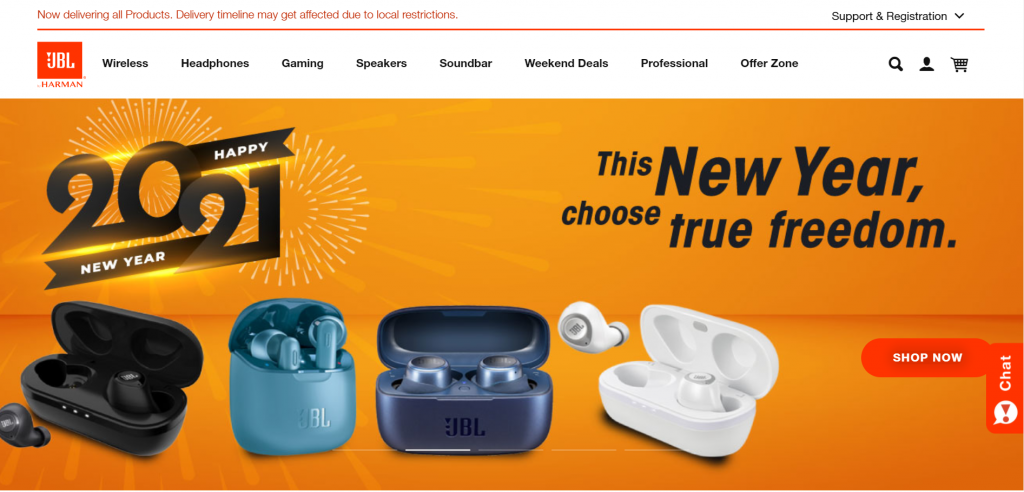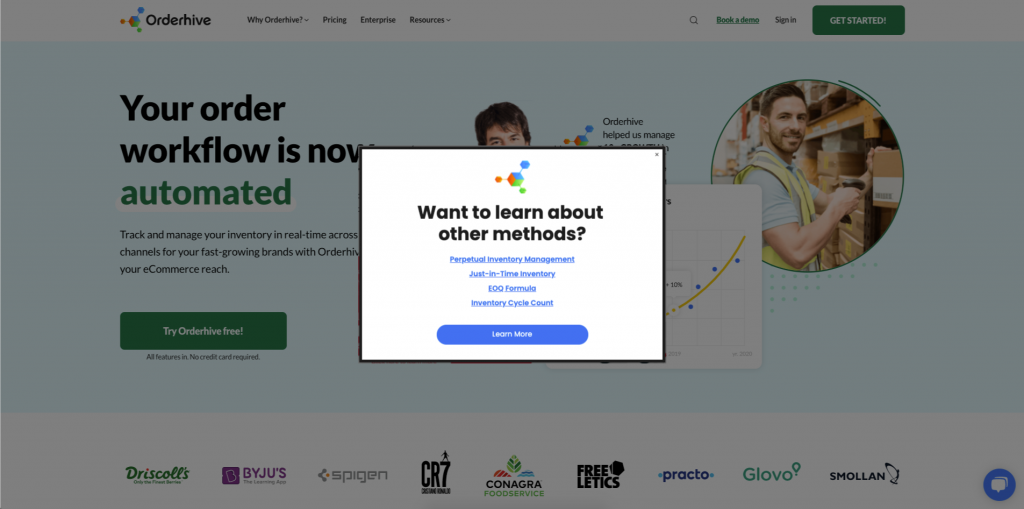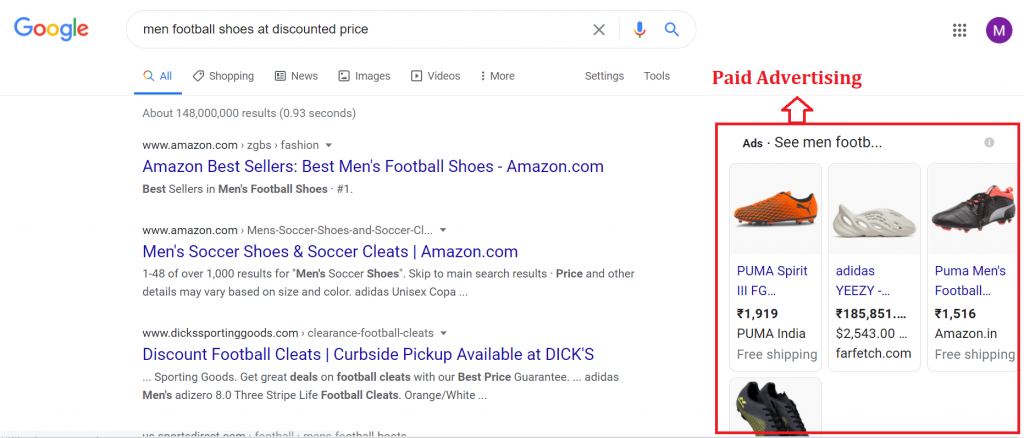I recently started working on a Progressive Web App (PWA) for a client with my team. We’re using React with client-side routing via React Router, and one of the first elements that we made was the main menu. Menus are a key component of any site or app. That’s really how folks get around, so making it accessible was a super high priority for the team.
But in the process, we learned that making an accessible main menu in a PWA isn’t as obvious as it might sound. I thought I’d share some of those lessons with you and how we overcame them.
As far as requirements go, we wanted a menu that users could not only navigate using a mouse, but using a keyboard as well, the acceptance criteria being that a user should be able to tab through the top-level menu items, and the sub-menu items that would otherwise only be visible if a user with a mouse hovered over a top-level menu item. And, of course, we wanted a focus ring to follow the elements that have focus.
The first thing we had to do was update the existing CSS that was set up to reveal a sub-menu when a top-level menu item is hovered. We were previously using the visibility property, changing between visible and hidden on the parent container’s hovered state. This works fine for mouse users, but for keyboard users, focus doesn’t automatically move to an element that is set to visibility: hidden (the same applies for elements that are given display: none). So we removed the visibility property, and instead used a very large negative position value:
.menu-item {
position: relative;
}
.sub-menu {
position: absolute
left: -100000px; /* Kicking off the page instead of hiding visiblity */
}
.menu-item:hover .sub-menu {
left: 0;
}
This works perfectly fine for mouse users. But for keyboard users, the sub menu still wasn’t visible even though focus was within that sub menu! In order to make the sub-menu visible when an element within it has focus, we needed to make use of :focus and :focus-within on the parent container:
.menu-item {
position: relative;
}
.sub-menu {
position: absolute
left: -100000px;
}
.menu-item:hover .sub-menu,
.menu-item:focus .sub-menu,
.menu-item:focus-within .sub-menu {
left: 0;
}
This updated code allows the the sub-menus to appear as each of the links within that menu gets focus. As soon as focus moves to the next sub menu, the first one hides, and the second becomes visible. Perfect! We considered this task complete, so a pull request was created and it was merged into the main branch.
But then we used the menu ourselves the next day in staging to create another page and ran into a problem. Upon selecting a menu item—regardless of whether it’s a click or a tab—the menu itself wouldn’t hide. Mouse users would have to click off to the side in some white space to clear the focus, and keyboard users were completely stuck! They couldn’t hit the esc key to clear focus, nor any other key combination. Instead, keyboard users would have to press the tab key enough times to move the focus through the menu and onto another element that didn’t cause a large drop down to obscure their view.
The reason the menu would stay visible is because the selected menu item retained focus. Client-side routing in a Single Page Application (SPA) means that only a part of the page will update; there isn’t a full page reload.
There was another issue we noticed: it was difficult for a keyboard user to use our “Jump to Content” link. Web users typically expect that pressing the tab key once will highlight a “Jump to Content” link, but our menu implementation broke that. We had to come up with a pattern to effectively replicate the “focus clearing” that browsers would otherwise give us for free on a full page reload.
The first option we tried was the easiest: Add an onClick prop to React Router’s Link component, calling document.activeElement.blur() when a link in the menu is selected:
const Menu = () => {
const clearFocus = () => {
document.activeElement.blur();
}
return (
<ul className="menu">
<li className="menu-item">
<Link to="/" onClick={clearFocus}>Home</Link>
</li>
<li className="menu-item">
<Link to="/products" onClick={clearFocus}>Products</Link>
<ul className="sub-menu">
<li>
<Link to="/products/tops" onClick={clearFocus}>Tops</Link>
</li>
<li>
<Link to="/products/bottoms" onClick={clearFocus}>Bottoms</Link>
</li>
<li>
<Link to="/products/accessories" onClick={clearFocus}>Accessories</Link>
</li>
</ul>
</li>
</ul>
);
}
This approach worked well for “closing” the menu after an item is clicked. However, if a keyboard user pressed the tab key after selecting one of the menu links, then the next link would become focused. As mentioned earlier, pressing the tab key after a navigation event would ideally focus on the “Jump to Content” link first.
At this point, we knew we were going to have to programmatically force focus to another element, preferably one that’s high up in the DOM. That way, when a user starts tabbing after a navigation event, they’ll arrive at or near the top of the page, similiar to a full page reload, making it much easier to access the jump link.
We initially tried to force focus on the
The next idea was to force focus on the logo in the header, as this itself is just a link back to the home page and can receive focus. However, in this particular case, the logo was below the “Jump To Content” link in the DOM, which means that a user would have to shift + tab to get to it. No good.
We finally decided that we had to render an interact-able element, for example, an anchor element, in the DOM, at a point that’s above than the “Jump to Content” link. This new anchor element would be styled so that it’s invisible and that users are unable to focus on it using “normal” web interactions (i.e. it’s taken out of the normal tab flow). When a user selects a menu item, focus would be programmatically forced to this new anchor element, which means that pressing tab again would focus directly on the “Jump to Content” link. It also meant that the sub-menu would immediately hide itself once a menu item is selected.
const App = () => {
const focusResetRef = React.useRef();
const handleResetFocus = () => {
focusResetRef.current.focus();
};
return (
<Fragment>
<a
ref={focusResetRef}
href="javascript:void(0)"
tabIndex="-1"
style={{ position: "fixed", top: "-10000px" }}
aria-hidden
>Focus Reset</a>
<a href="#main" className="jump-to-content-a11y-styles">Jump To Content</a>
<Menu onSelectMenuItem={handleResetFocus} />
...
</Fragment>
)
}
Some notes of this new “Focus Reset” anchor element:
href is set to javascript:void(0) so that if a user manages to interact with the element, nothing actually happens. For example, if a user presses the return key immediately after selecting a menu item, that will trigger the interaction. In that instance, we don’t want the page to do anything, or the URL to change.tabIndex is set to -1 so that a user can’t “normally” move focus to this element. It also means that the first time a user presses the tab key upon loading a page, this element won’t be focused, but the “Jump To Content” link instead.style simply moves the element out of the viewport. Setting to position: fixed ensures it’s taken out of the document flow, so there isn’t any vertical space allocated to the elementaria-hidden tells screen readers that this element isn’t important, so don’t announce it to users
But we figured we could improve this even further! Let’s imagine we have a mega menu, and the menu doesn’t hide automatically when a mouse user clicks a link. That’s going to cause frustration. A user will have to precisely move their mouse to a section of the page that doesn’t contain the menu in order to clear the :hover state, and therefore allow the menu to close.
What we need is to “force clear” the hover state. We can do that with the help of React and a clearHover class:
// Menu.jsx
const Menu = (props) => {
const { onSelectMenuItem } = props;
const [clearHover, setClearHover] = React.useState(false);
const closeMenu= () => {
onSelectMenuItem();
setClearHover(true);
}
React.useEffect(() => {
let timeout;
if (clearHover) {
timeout = setTimeout(() => {
setClearHover(false);
}, 0); // Adjust this timeout to suit the applications' needs
}
return () => clearTimeout(timeout);
}, [clearHover]);
return (
<ul className={`menu ${clearHover ? "clearHover" : ""}`}>
<li className="menu-item">
<Link to="/" onClick={closeMenu}>Home</Link>
</li>
<li className="menu-item">
<Link to="/products" onClick={closeMenu}>Products</Link>
<ul className="sub-menu">
{/* Sub Menu Items */}
</ul>
</li>
</ul>
);
}
This updated code hides the menu immediately when a menu item is clicked. It also hides immediately when a keyboard user selects a menu item. Pressing the tab key after selecting a navigation link moves the focus to the “Jump to Content” link.
At this point, our team had updated the menu component to a point where we were super happy. Both keyboard and mouse users get a consistent experience, and that experience follows what a browser does by default for a full page reload.
Our actual implementation is slightly different than the example here so we could use the pattern on other projects. We put it into a React Context, with the Provider set to wrap the Header component, and the Focus Reset element being automatically added just before the Provider’s children. That way, the element is placed before the “Jump to Content” link in the DOM hierarchy. It also allows us to access the focus reset function with a simple hook, instead of having to prop drill it.
We have created a Code Sandbox that allows you to play with the three different solutions we covered here. You’ll definitely see the pain points of the earlier implementation, and then see how much better the end result feels!
We would love to hear feedback on this implementation! We think it’s going to work well, but it hasn’t been released to in the wild yet, so we don’t have definitive data or user feedback. We’re certainly not a11y experts, just doing our best with what we do know, and are very open and willing to learn more on the topic.
The post How We Improved the Accessibility of Our Single Page App Menu appeared first on CSS-Tricks.
You can support CSS-Tricks by being an MVP Supporter.






















